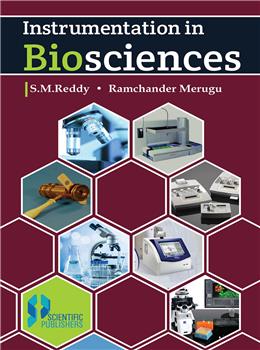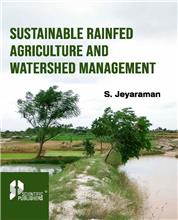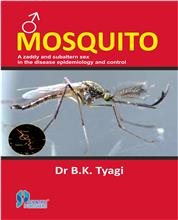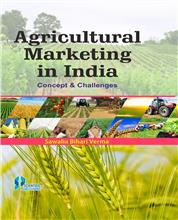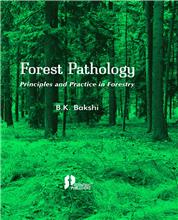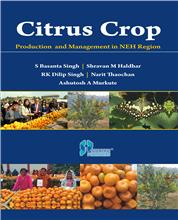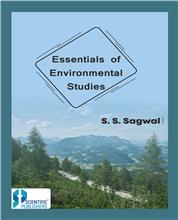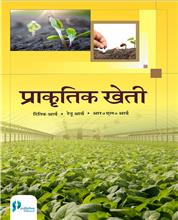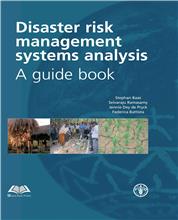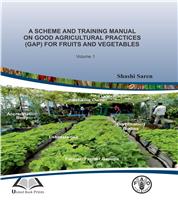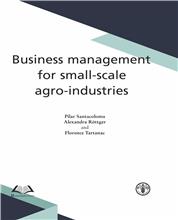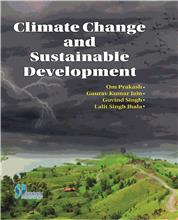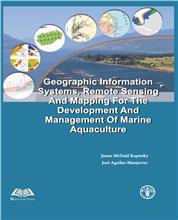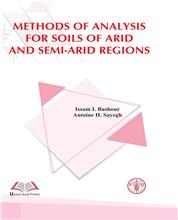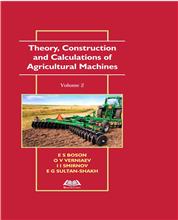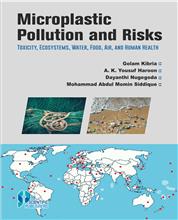Chapter 1 : Instrumentation laboratory
1.1.Miroscopes
1.2.Slides, test tubes and petridishes
1.3.Dyes and other indicators
1.4.Forceps, probes and scalpels
1.5. Beakers, flasks and burners
1.6.Errors, precision and accuracy
1.7.Significant figures
1.8. Precision and accuracy
1.9. Further Reading
Review questions
Chapter 2: Units of measurement
2.1. Metric system
2.2. Conversion of units
2.3. Units used in preparation of solution
i) Standard solutions
ii) Molar solutions
iii) Molal solutions
iv) Normal solutions
2.4. Units used in laboratory calculations
i) Weight relationship of hydrated and unhydrated salts
ii) Conversion of solution strength
iii) Photo metric calculations
iv) Titrimetric analysis
2.5. Further reading
Review Questions
Chapter 3: Microscopy
3.1. Historical developments
3.2. Types of microscopes
3.2.1. Simple microscope
3.2.2. Compound microscope
3.2. 3. Bright field microscope
3.2.4. Dark field microscope
3.2.5. Phasecontrast microscope
3.2.6. Fluorescence microscope
3.2.7.. Transmission Electron microscope
3.2.8. Scanning electron microscope
3.2.9. Scanning probe microscope
3.2.10. Scanning tunneling microscope
3.2. 11. Confocal microscope
3.2.12. Atomic force microscope
3.2.13. Electro chemical scanning tunneling microscope
3.2.14. Polarising photomicrography microscope
3.2.15. Interference microscope
3.2.16. Further reading
Review Questions
Chapter 4: Balance
4.1. Physical Balance
i) Triple beam single pan balance
ii) Double pan balance
4.2. Analytical Balance
i) Double pan balance
ii) Single pan balance
4.3. Methods of weighing
4.4. Maintenance of balance
4.5. Further reading
Review Questions
Chapter 5: Techniques in Microbiology
5.1. Culture medium
5.1.1. Liquid Medium
5.1.2. Solid medium
5.2. Types of culture
i) Streak culture or surface plating culture
ii) Dawn or carpet culture
iii) Streak culture
iv) Stab culture
v) Pour plate method
vi) Sweep plate method
vii) Methods in liquid medium
viii) Anaerobic culture
a) Displacement of oxygen
b) By chemical method
5.2.1 Isolation of microorganisms
5.2.2. Isolation of genetically pure culture
5.3. Preservation of fungal culture
5.4. Microbial growth
5.4.1. Growth curve
5.4.2. Continuous culture
5.4.3. Synchronous growth
5.4.4. Measurement of growth
5.5. Sterilization and Disinfection
5.5.1. Physical
5.5.2. Chemical
5.5.3. Tests for disinfection
5.6. Principles of staining
5.6.1. Common staining techniques
5.6.2. Further Reading
Review Questions
Chapter 6: Cell and Tissue Culture
6.1. Plant Cell and Tissue culture
6.2. Animal Cell and Tissue Culture
6.3.Further Reading
Review Questions
Chapter- 7 BIOSENSORS
7.1. Components of on-line monitoring and control
7.2 . Biosensors
7.3. Categories of biosensor instruments
7.4 . Application of biosensors
7.5 Biosensors in fermentation technology
7.6. Further Reading
Review Questions
Chapter 8: Electrophoresis
8.1. Types of electrophoresis
8.1.1. Moving boundary electrophoresis
8.1.2. Zone electrophoresis
8.2.1. Support media
i) Agar gel
ii) Agarose gel
iii) Starch gel
iv) Polyacrylamide gel electrophoresis
8.3. Isoelectric focusing
8.4.. Two dimensional Polyacylamide electrophoresis
8.5. Continuous flow electrophoresis
8.6. Pulse field gel electrophoresis
8.7. Capillary electrophoresis
8.8. Immunoelectrophoresis
8.9. Detection, estimation and recovery of proteins from gels
8.10. Further reading
Review Questions
Chapter 9: Centrifugation
9.1 Principles of centrifugation
9.2 Types of centrifuges
9.2.1. Small bench centrifuge
9.2.2. Large refrigerator centrifuge
9.2.3. High speed refrigerator centrifuge
9.2.4. Ultra centrifuge
9.3. Types of Rotors
9.3.1 Ventricle tube Rotors
9.3.2 Fixed angle Rotors
9.3.3 Swinging bucket Rotors
9.3.4 Zonal Rotors
9.3.5 Elutriator Rotors
9.4. Types of Centrifugations
9.4.1 Analytical Centrifugation
9.4.2 Preparative Centrifugation
9.5. Safety in the use of Centrifugation
9.6. Further reading
Review Questions
Chapter 10 pH and its measurement
10.1 Definitions
10.2 Determination of pH
10.3 Acids and bases
10.4 pH meter
10.5 Types of pH meters
10.6 Buffers and their importance
10.7 Care of pH meter
10.8. Further Reading
Review Questions
Chapter 11 Techniques in radiation biology
11.1 Radioisotopes
11.2 Dosimetry
11.3 Radio isotopic techniques
11.4 Isotope dilution technique
11.5 Radio dating
11.6 Radioactive tracer technique
11.7 Radio immunoassay (RIA)
11.8. Detection and measurement of radioactivity
11.8.1 Fountain-pen Dosimeter
11.8.2. Geiger-Muller Counter
11.8.3. Scintillation – Counter
11.8.4. Cerenkov counting
11.8.5. Auto radiography
11.9. Safety in the radiation laboratory
11.10. Further Reading
Review Questions
Chapter 12 Spectroscopy
12.1 Electromagnetic radiation
12.1.2. Electromagnetic spectrum
12.2. Colorimetry
12.3. Spectrophotometery
12.4. UV-VIS spectroscopy
12.5. Flame photometry
12.6. Nephelometry and turbidimetry
12.7. Flouimetery and phosphometry
12.8. Infrared spectrophotometry
12.9. Raman spectroscopy
12.10. Electron spin Resonance spectroscopy (ESR)
12.11. Nuclear Magnetic Resonance (NMR)
12.12. Atomic Emission spectroscopy
12.13. Atomic Absorption spectroscopy
12.14. Further Reading
Review Questions
Chapter 13 Chromatography
13.1. Classification of chromatography
13.2. Paper chromatography
13.3. TLC chromatography
13.4 Column chromatography
13.5. Absorption chromatography
13.6. Ion exchange chromatography
13.7. Liquid – Liquid Chromatography
13.8. Gas chromatography
13.9. HPLC
13.10. Immunoelectrophoresis
13.11. Gel permeation chromatography
13.12. Affinity chromatography
13.13. Selectivity of chromatography
13.14. Further Reading
Review Questions
Chapter 14 Manometer and Polarimeter
14.1. Manometry
i) Glson Constant Pressure manometer
ii) Piezometer tube manometer
iii) U-Tube manometer
14.2. Polarimetry
i) Principle
ii) Construction of Polarimeter
iii) Applications
14.3. Further Reading
Review Questions
Chapter 15 Protein sequencing
15.1. Amino acids
15.2. Reaction of α-amino acids
15.3. Synthesis of α-amino acids
15.4. Levels of structure
15.5. Amino acids composition
15.6. Sequencing
15.7. Protein sequencing by mass
15.8. Further reading
Review Questions
Chapter 16 Polymerase
16.1. Procedure
16.2. Types of PCR
16.3. Real time PCR
16.4. Touch down PCR
16.5. Applications of PCR
16.6. Human health and human genome projects
16.7. Further reading
Review questions
Chapter 17 Genetic Engineering
17.1. Types of vectors
17.2. Cloning genes
17.3. Site specific mutagenesis
17.4. Detection of hereditary diseases
17.5. Further reading
Review Questions
Chapter 18 Bioinformatics
18.1. Genome analysis
18.2. Gene prediction software
18.3. Protein folding
18.4. Metabolomics
18.5. Basic local alignment tools (BLAST)
18.6. Multiple sequence alignment tools
18.7. Secondary databases
18.8. Protein databases (Amino acid sequence)
18.9. Applications of Bioinformatics
18.10. Further reading
Review Questions
